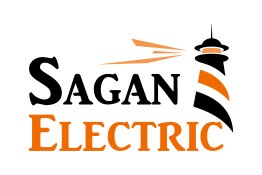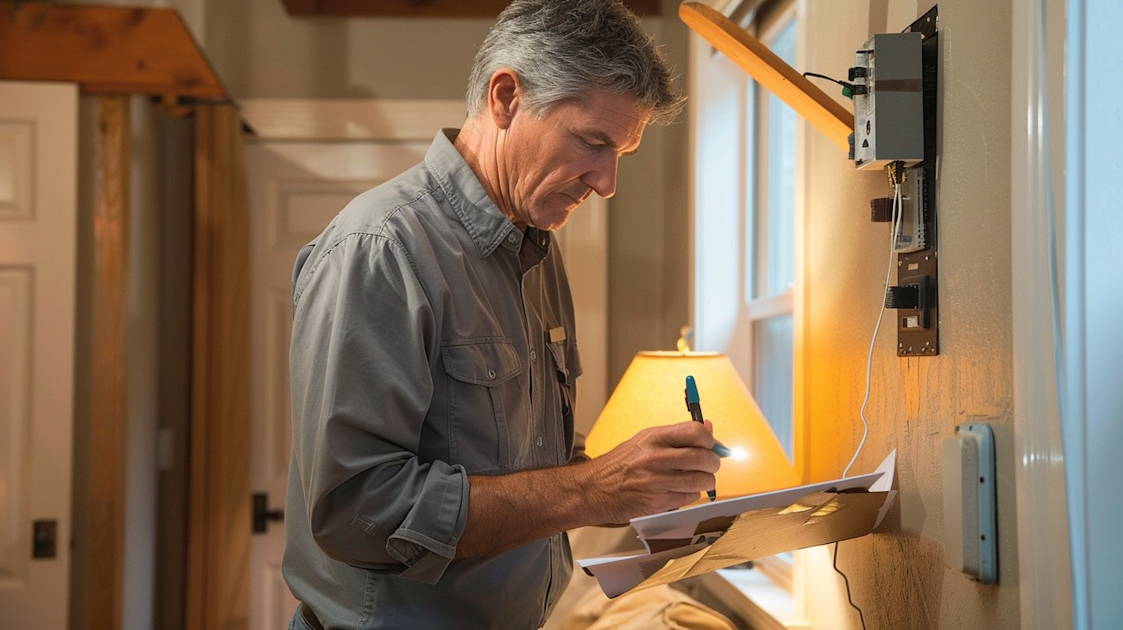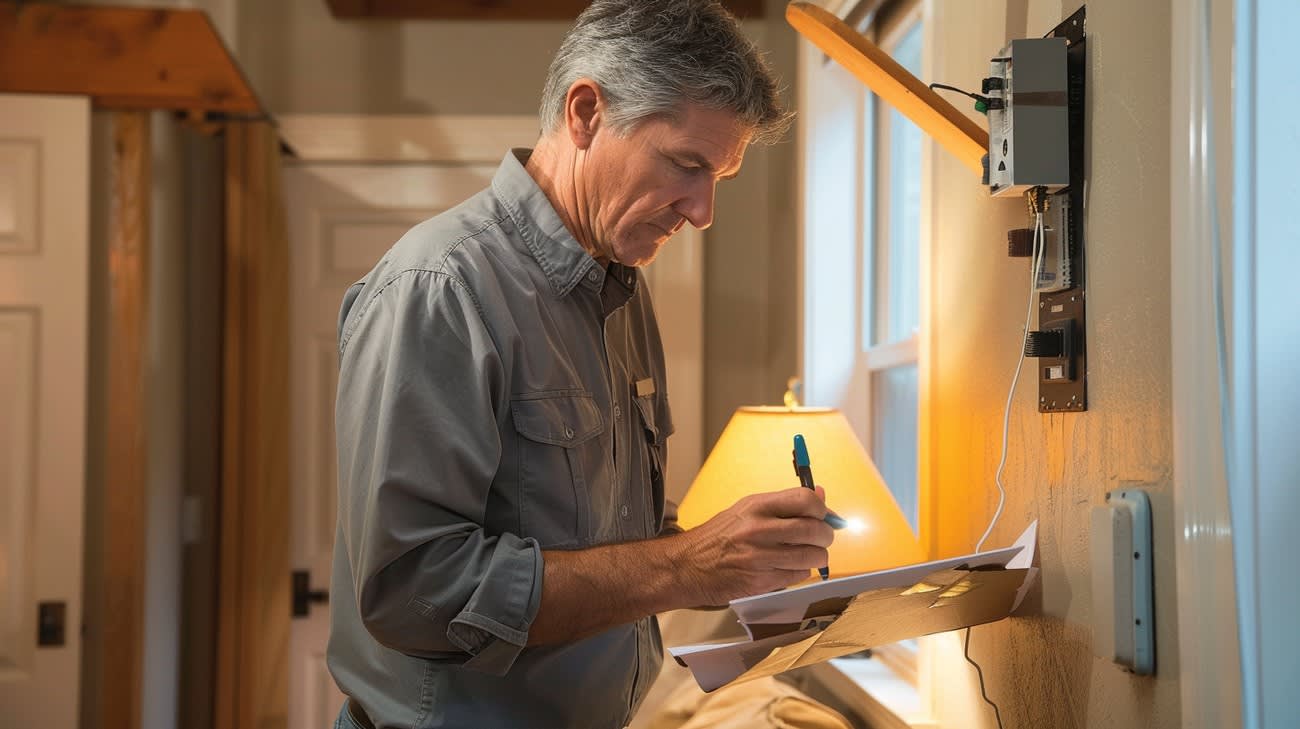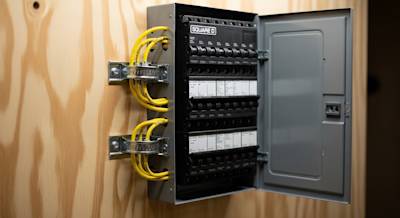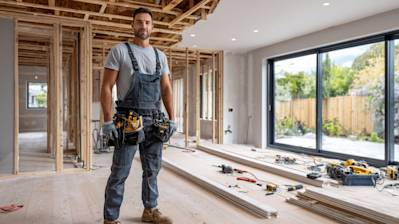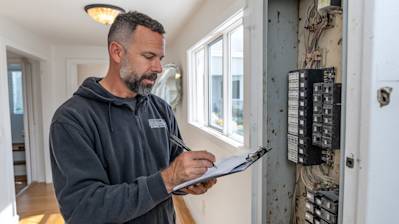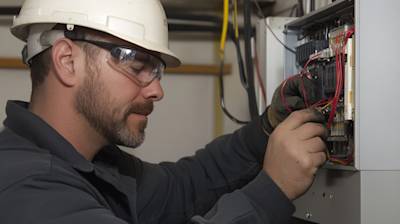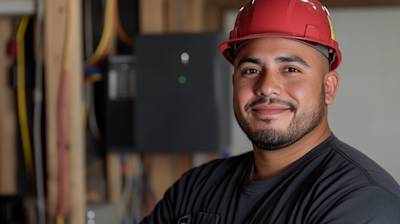In today’s world, electricity plays a vital role in our everyday lives. From powering our appliances to lighting our homes, it is an indispensable aspect of our modern lifestyle. However, with this power comes responsibility. Ensuring the safety of your home’s electrical system is crucial to prevent hazards and maintain efficiency. Enter the home electrical safety inspection — a necessary, yet often overlooked, check-up for every homeowner.
What is a Home Electrical Safety Inspection?
At its core, a home electrical safety inspection is an evaluation of your home’s electrical systems and wiring. A qualified electrician conducts the inspection to identify potential issues and ensure everything complies with electrical safety standards. This proactive approach is an opportunity to catch problems before they escalate, saving you both time and money in the long run.
Why Electrical Inspections Are Important
Safety is the number one reason for having an electrical inspection. Faulty wiring is a significant cause of house fires, and a comprehensive inspection can identify risk factors before they turn deadly. Additionally, an inspection can help in:
- Reducing Utility Bills: Identifying inefficient appliances or systems helps reduce energy consumption.
- Maintaining Property Value: Ensuring up-to-date electrical systems can increase your home’s market value.
- Protecting Appliances: Proper wiring prevents damage to your high-value electrical devices and appliances.
Signs You Need an Inspection
Don’t wait for disaster to strike before calling an electrician. Be proactive by keeping an eye on telltale signs that your electrical system needs attention:
- Frequent Tripping of Circuit Breakers: This often indicates overload or fault in the system.
- Flickering or Dimming Lights: A common symptom of faulty wiring or an overloaded circuit.
- Warm or Sparking Outlets: A sign of serious electrical issues that must be addressed immediately.
- Burning Smell: Often associated with a short circuit or wiring issue.
- Two-Prong Outlets: An indicator of an outdated system that lacks grounding.
Components of a Thorough Inspection
During an inspection, an electrician will focus on various components to ensure everything is in good shape:
Electrical Panel Inspection
The heart of your electrical system, your panel or breaker box should be in top condition:
- Ensure Proper Labeling: Breakers should be correctly labeled to quickly identify circuits during an emergency.
- Look for Rust or Corrosion: These can be signs of water ingress which poses a serious risk.
- Check Capacity: Ensure that the panel can handle your electricity needs safely.
Wiring and Outlets
Wiring needs to be inspected for wear and tear, as well as outdated materials:
- Assess Wire Insulation: Ensure no bare wires are exposed, which could lead to shocks or fires.
- Look for Aluminum Wiring: Older homes might have aluminum wiring that needs special attention or replacement.
- Ensure Proper Outlet Functionality: Outlets must be in good working order, including GFCI (Ground Fault Circuit Interrupter) outlets in bathrooms and kitchens.
Grounding Inspection
Proper grounding prevents electrical overloads and shocks:
- Check Ground Rods: Verify that ground rods are correctly installed and in good condition.
- Ensure Bonding: All metal components are bonded to prevent static discharge and reduce the risk of electric shock.
Preparing for the Inspection
Before the electrician arrives, there are several steps you can take to ensure a smooth inspection:
- Clear Access: Make sure there is easy access to your electrical panel and major appliances.
- Note Down Problems: Keep track of any issues or irregularities you’ve noticed.
- Gather Documentation: Have your home’s electrical plan or previous inspection reports ready.
Choosing a Qualified Electrician
Selecting the right professional is essential:
- Verify Credentials: Ensure they are licensed and have good reviews or references.
- Experience Matters: Opt for someone familiar with your type of home and its age-related electrical quirks.
- Clear Pricing: Transparent and affordable pricing without hidden fees or surprise costs.
Benefits of Regular Inspections
By making electrical safety inspections a regular occurrence, you can:
- Increase Lifespan of Electrical Systems: Addressing minor issues early prolongs the life of your electrical components.
- Enhance Peace of Mind: Feel secure knowing your home’s electrical system is safe for your family.
- Comply with Codes: Stay up-to-date with local and national electrical safety standards.

Home Electrical Safety Inspection FAQs
Why should I get a home electrical safety inspection?
A home electrical safety inspection is crucial for ensuring the safety and functionality of your home's electrical system. Regular inspections help identify potential hazards such as outdated wiring, overloaded circuits, or faulty electrical panels, which may otherwise go unnoticed. These preventative checks can save you from future electrical failures and reduce the risk of electrical fires, which contributes to the safety of your home and its occupants.
How often should a home electrical safety inspection be conducted?
Ideally, you should have a home electrical safety inspection every three to five years. However, the frequency can vary based on the age of the home, condition of the electrical system, and any major renovations or changes in electrical loads. Newer homes might not need inspections as frequently, but older homes or those with extensive modifications should be checked more regularly to ensure everything is up to code and functioning correctly.
Can I perform a home electrical safety inspection myself?
While homeowners can perform basic checks such as testing GFCI outlets and looking for visible signs of wear or damage, a comprehensive home electrical safety inspection should be carried out by a licensed electrician. Electricians have the expertise and tools needed to safely and accurately assess components like circuit breakers, wiring insulation, and grounding systems that require specialized knowledge.
What does a home electrical safety inspection include?
A home electrical safety inspection includes a thorough examination of all electrical components in your home. Inspectors will check the condition of circuits, breakers, panels, outlets, and wiring. They assess the adequacy of electrical loads, look for signs of overheating or damage, verify grounding and bonding, and ensure compliance with local codes and standards. This comprehensive assessment is designed to identify potential safety issues before they become serious problems.
How can I prepare for a home electrical safety inspection?
To prepare for a home electrical safety inspection, ensure easy access to your electrical panels, outlets, and major appliances. Clear away any obstacles, and gather relevant documentation, such as a record of past electrical work or inspections. Feel free to prepare any questions you have about your home's electrical system so the electrician can address all your concerns during the inspection.
What are the signs that my home might need an electrical safety inspection?
Common signs that your home might need a home electrical safety inspection include frequent circuit breaker trips, flickering lights, discolored outlets, or unusual burning smells near outlets or appliances. Outdated two-prong outlets or visible signs of wear and tear on wires or breakers are also indicative of potential electrical failures. If you're experiencing any of these issues, it's crucial to schedule an inspection as soon as possible.
Is a home electrical safety inspection expensive?
The cost of a home electrical safety inspection can vary based on the size and age of your home, as well as your location. On average, the price ranges from $125 to $300. While this might seem like an added expense, investing in an inspection can prevent costly repairs or replacements in the future, providing peace of mind about your home's electrical safety and efficiency.
What should I do if issues are found during a home electrical safety inspection?
If any issues are discovered during a home electrical safety inspection, the inspector will provide you with a detailed report and suggest the necessary corrective actions. It is important to address these recommendations promptly to prevent potential failures or hazards. Work with a licensed electrician to perform any needed repairs or upgrades to ensure your home remains safe and up to code.

Cost Breakdown
Typical Price Ranges
Home electrical safety inspections usually range from $150 to $500. The cost can vary based on the size and age of your home, as well as the complexity of the electrical systems in place. In some cases, particularly for very large or older homes, the price might go higher, possibly reaching the $1,000 mark.
Factors That Affect Cost
Several factors influence the total cost of an electrical safety inspection. Here are some of the most significant ones:
Home Size and Layout: Larger homes naturally require more time to inspect, as there are more outlets, switches, and wiring to check. A sprawling layout can also add complexity and time.
Age of the Property: Older homes are likely to have outdated wiring and systems, which can demand a more thorough inspection. Electrics in older homes might not adhere to modern standards, making them more time-consuming to inspect.
Inspection Scope: A basic safety check will cost less than a comprehensive inspection that includes testing for specific concerns like grounding or arc fault conditions.
Necessity of Repairs: If the inspector finds issues that require immediate attention, like faulty wiring or outdated panels, the overall cost could increase with the necessity of these additional repairs.
Cost Comparison (Budget vs Premium Options)
When choosing between budget and premium options, it’s essential to consider what each includes:
Budget Options ($150-$250): These inspections might cover essential checks like verifying that outlets and switches work and identifying obvious hazards. However, they might not delve deeply into the overall health of your electrical system or include detailed reporting.
Premium Options ($300-$500+): Higher-end inspections typically offer a more comprehensive evaluation, including testing for faults in wiring, circuit breakers, and even sophisticated diagnostics with thermal imaging. A premium service often provides a detailed written report, which can be invaluable if any upgrades or repairs are necessary.
Hidden Costs to Consider

Timeline & Process
Phase 1: Scheduling and Preparation (1-2 weeks)
Duration: 1-2 weeks
What Happens: It all begins with scheduling an appointment with a qualified electrician. During this phase, you'll research and contact electrical inspection services, discuss your needs, and settle on a suitable date for the inspection.
Dependencies: Availability of both the homeowner and the electrician is a key factor. Generally, reputable electricians might have a packed schedule, so early booking is advisable.
How to Prepare:
- Compile a list of electrical concerns or irregularities you’ve noticed.
- Ensure your electrical panel and key outlets are accessible.
- Confirm your appointment a day or two before the scheduled date.
Phase 2: Initial Inspection (2-3 hours)
Duration: 2-3 hours
What Happens: The electrician arrives on-site and performs a thorough walkthrough of your home’s electrical systems. This includes checking wiring, outlets, panels, and safety devices such as smoke detectors.
Dependencies: The home must be easily navigable, so ensure areas around key electrical components are clutter-free.
How to Prepare:
- Be present if possible to provide access to different parts of your home.
- Prepare questions or notes regarding any electrical issues you've encountered.
Phase 3: Detailed Assessment and Reporting (3-5 days)
Duration: 3-5 days
What Happens: After the physical inspection, the electrician compiles a comprehensive report detailing their findings. This report will outline any safety hazards, non-compliance issues, or potential upgrades for energy efficiency.
Dependencies: The completion of this phase depends on the electrician’s workload and the complexity of any issues found.
How to Prepare:
- Review previous electrical work documentation, such as old inspection reports or installation certificates, for reference.
- Be ready to discuss findings and understand the implications of any issues highlighted.
Phase 4: Review and Planning for Remediation (1-2 weeks)
Duration: 1-2 weeks
What Happens: After receiving the inspection report, you’ll meet with the electrician to review the findings. They will provide recommendations for addressing any issues, including cost estimates and timelines for remediation work.
Dependencies: This phase depends on the scheduling availability of both parties for a review meeting.
How to Prepare:
- Prioritize issues that need addressing based on safety and budget.
- Prepare to discuss financial aspects regarding any further work needed.
Phase 5: Implementation of Repairs or Upgrades (Varies)
Duration: Varies depending on the complexity of required work
What Happens: The recommended work, whether repairs or upgrades, is carried out. This might involve replacing outdated wiring, adding circuit breakers, or installing safer electrical outlets.
Dependencies: The duration of this phase will depend on the extent of the work required and the electrician’s schedule.
How to Prepare:
- Clear the areas where electrical work is to be performed.
- Arrange for alternative accommodations if major wiring updates necessitate power outages.
Phase 6: Final Walkthrough and Verification (1-2 days)
Duration: 1-2 days What Happens: A final walkthrough is conducted by the electrician to verify that all work has been completed to standard and to ensure your peace of mind. Dependencies: Availability of both electrician and homeowner for a final check.
Final Thoughts
Regular home electrical safety inspections are essential for ensuring your home is safe and compliant with current standards. By identifying potential issues before they escalate, you can protect your family, save on costly repairs, and enhance the overall safety and efficiency of your electrical system. Whether you’re in an older property needing a thorough check or simply want peace of mind in your newer home, keeping up with inspections is vital.
If you're a homeowner in Sacramento, CA, we are here to help you with your home electrical safety inspection. Our team at Sagan Electric is committed to providing you with expert advice and comprehensive inspections tailored to your specific needs. Don’t wait for minor issues to become serious problems; reach out to us today to schedule a consultation or request a free estimate. Your safety is our priority, and we’re excited to assist you in making your home a safer place.
Tags: safety, home inspection, electrical,
